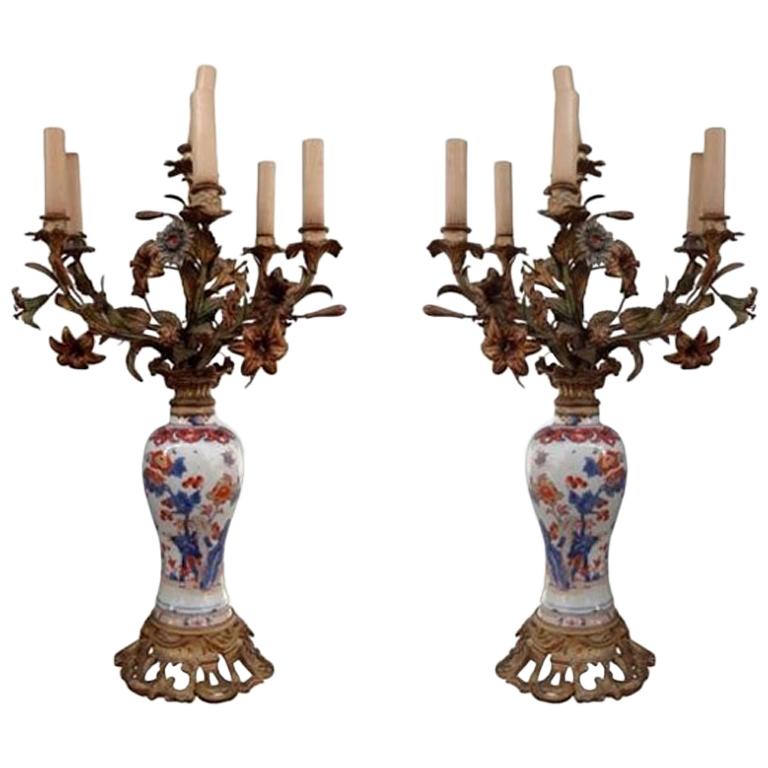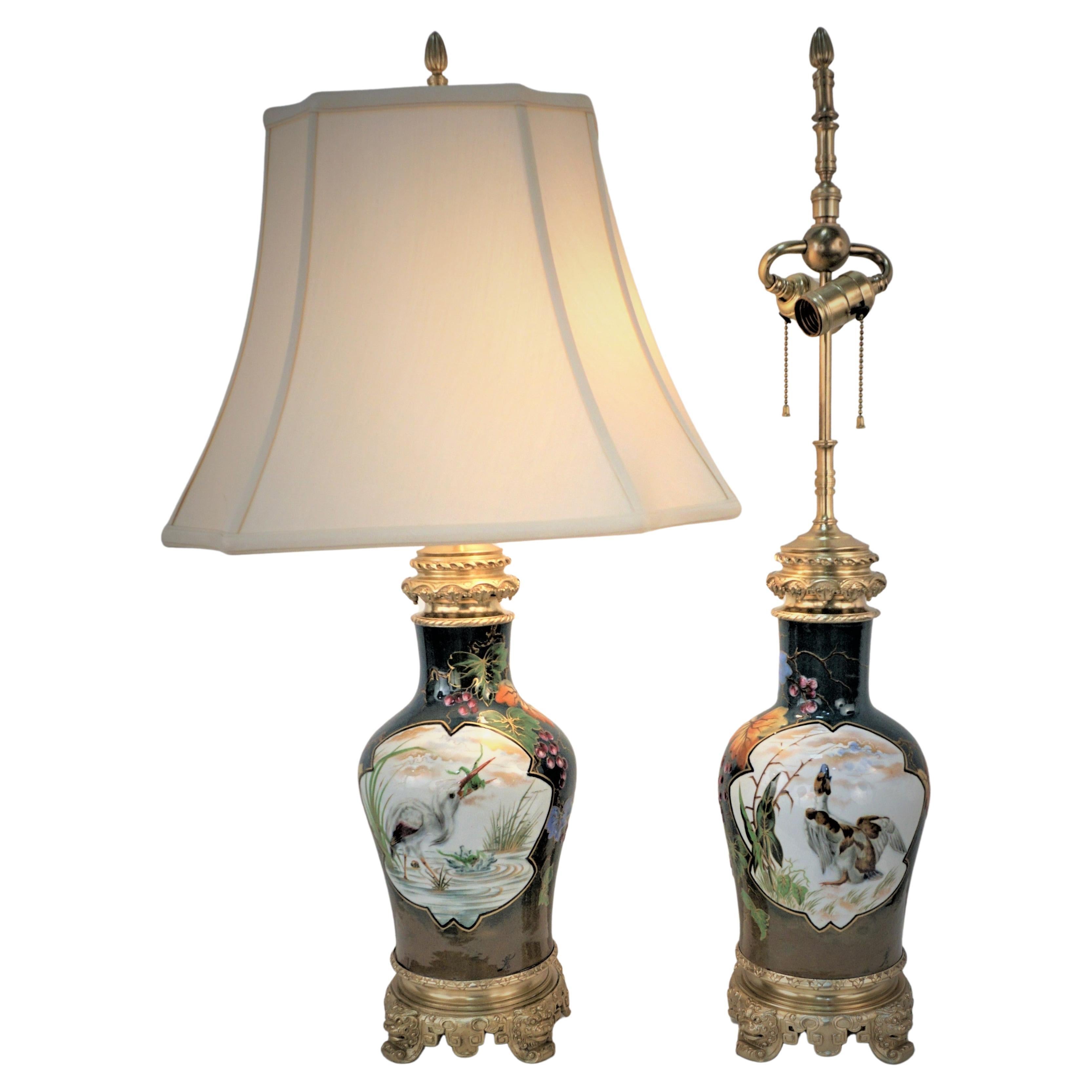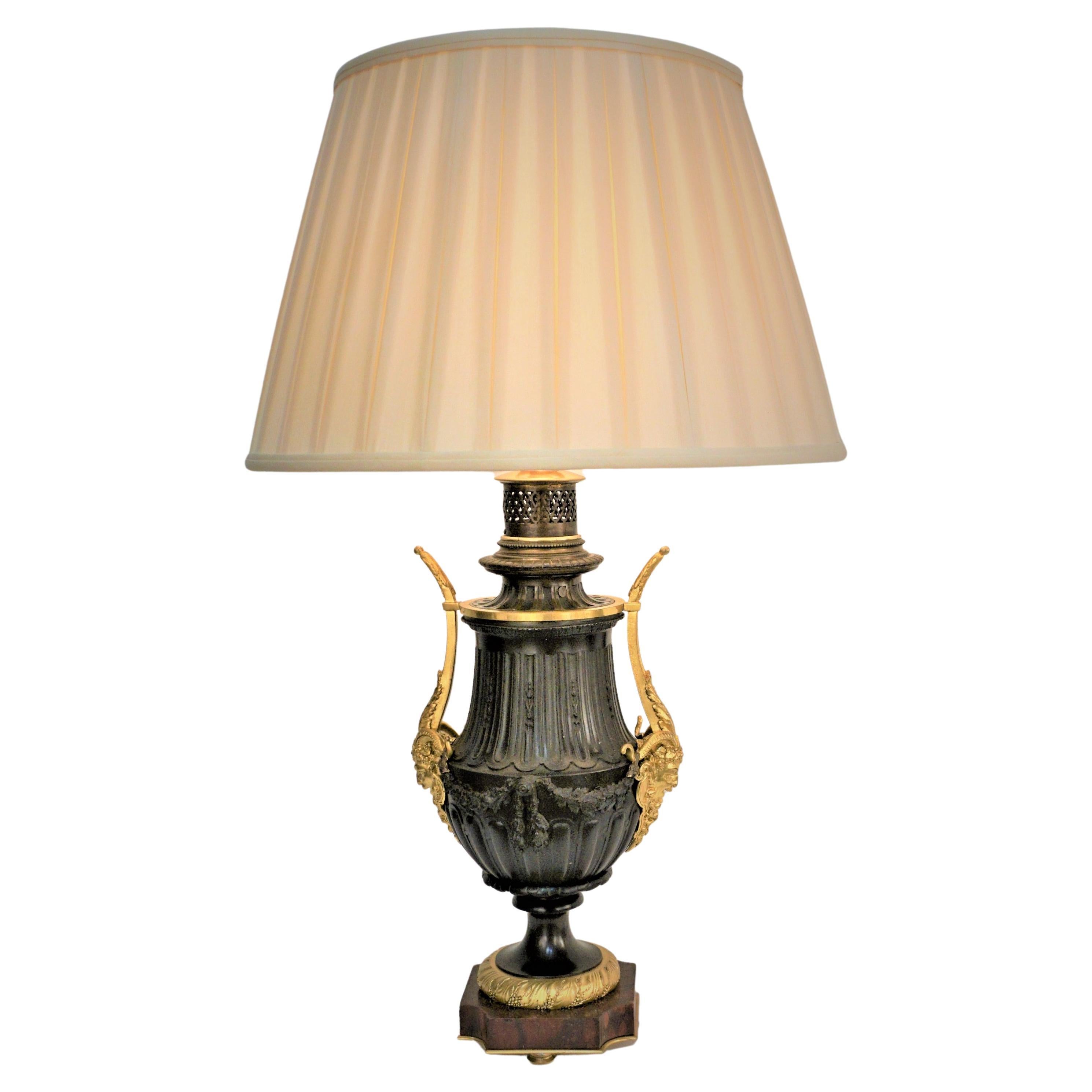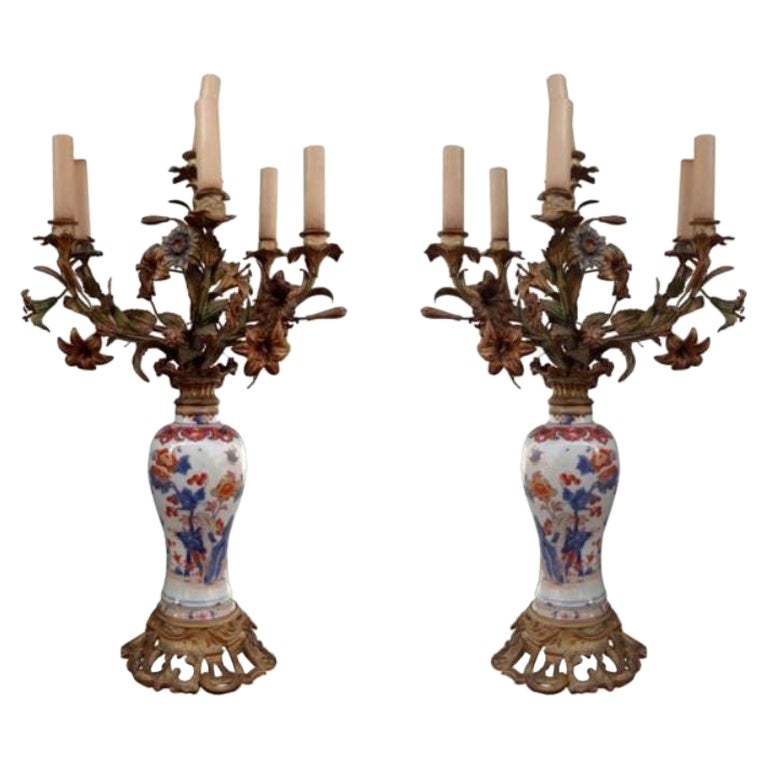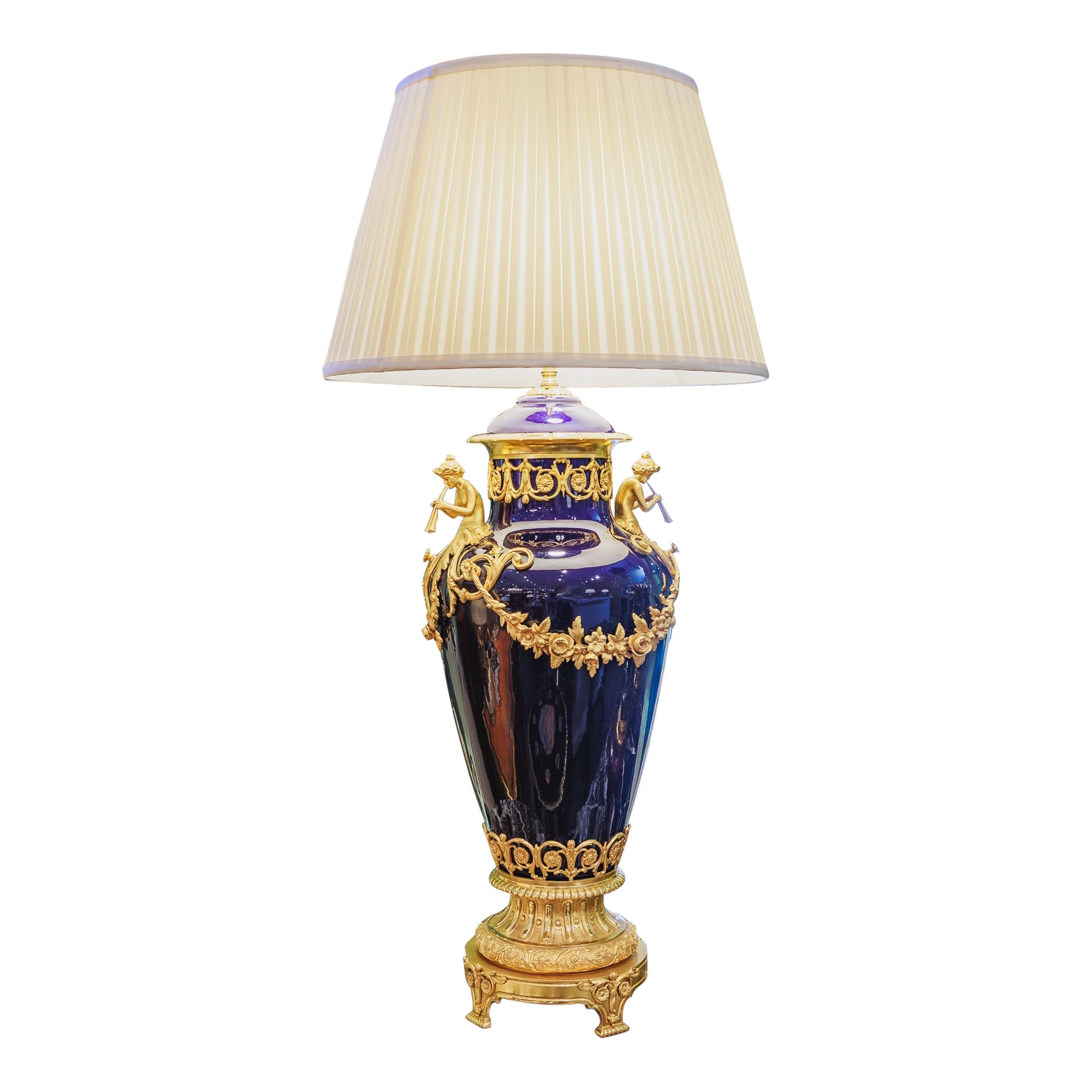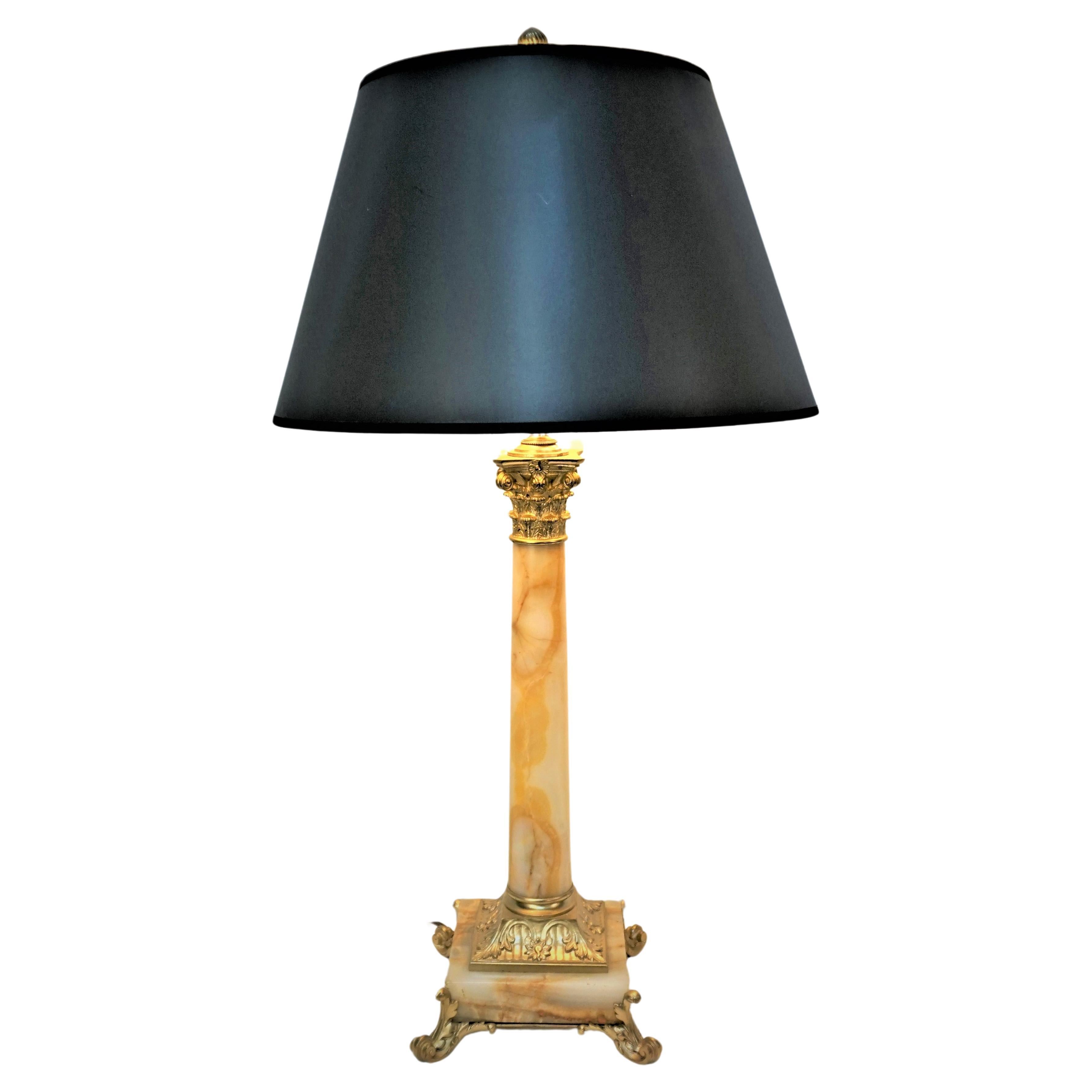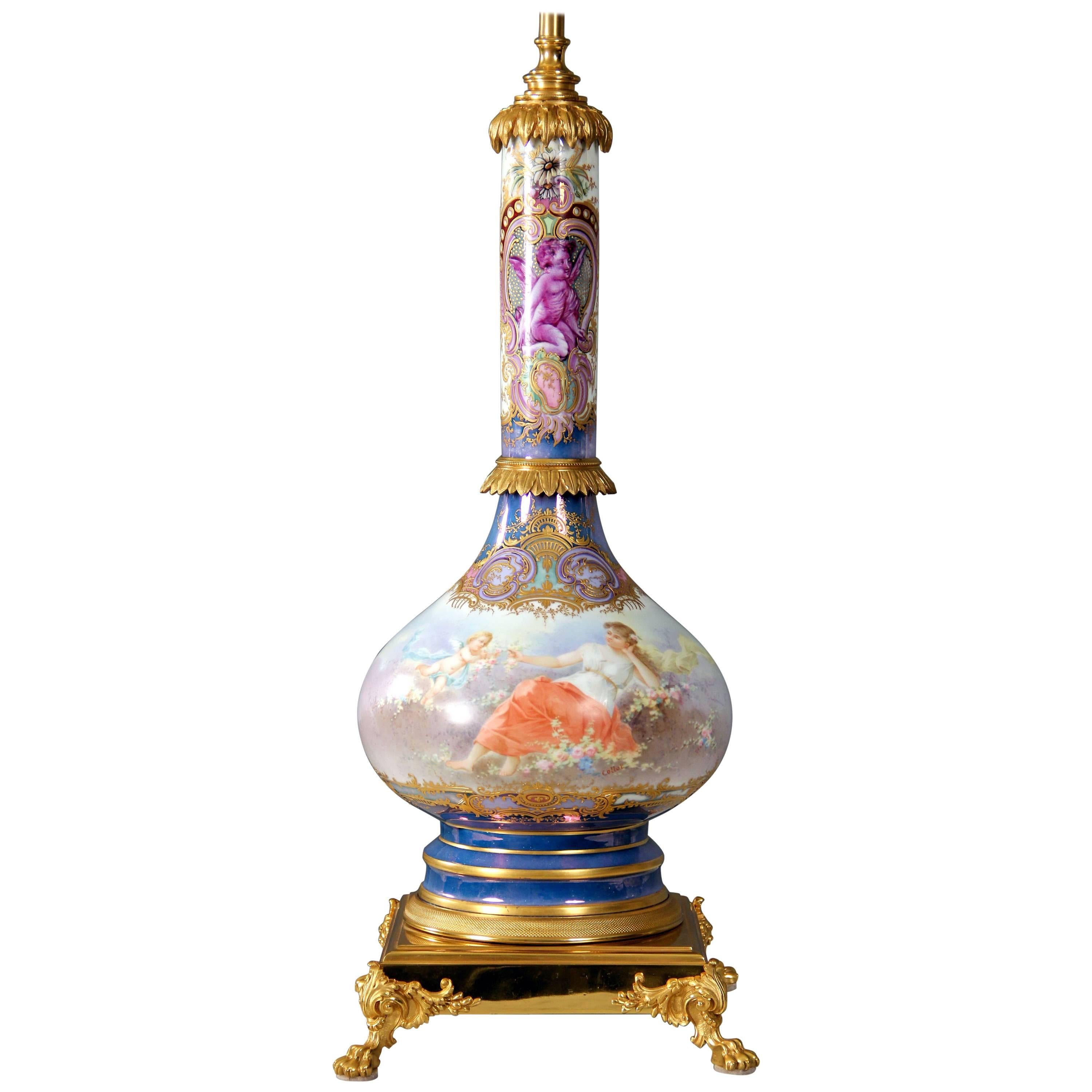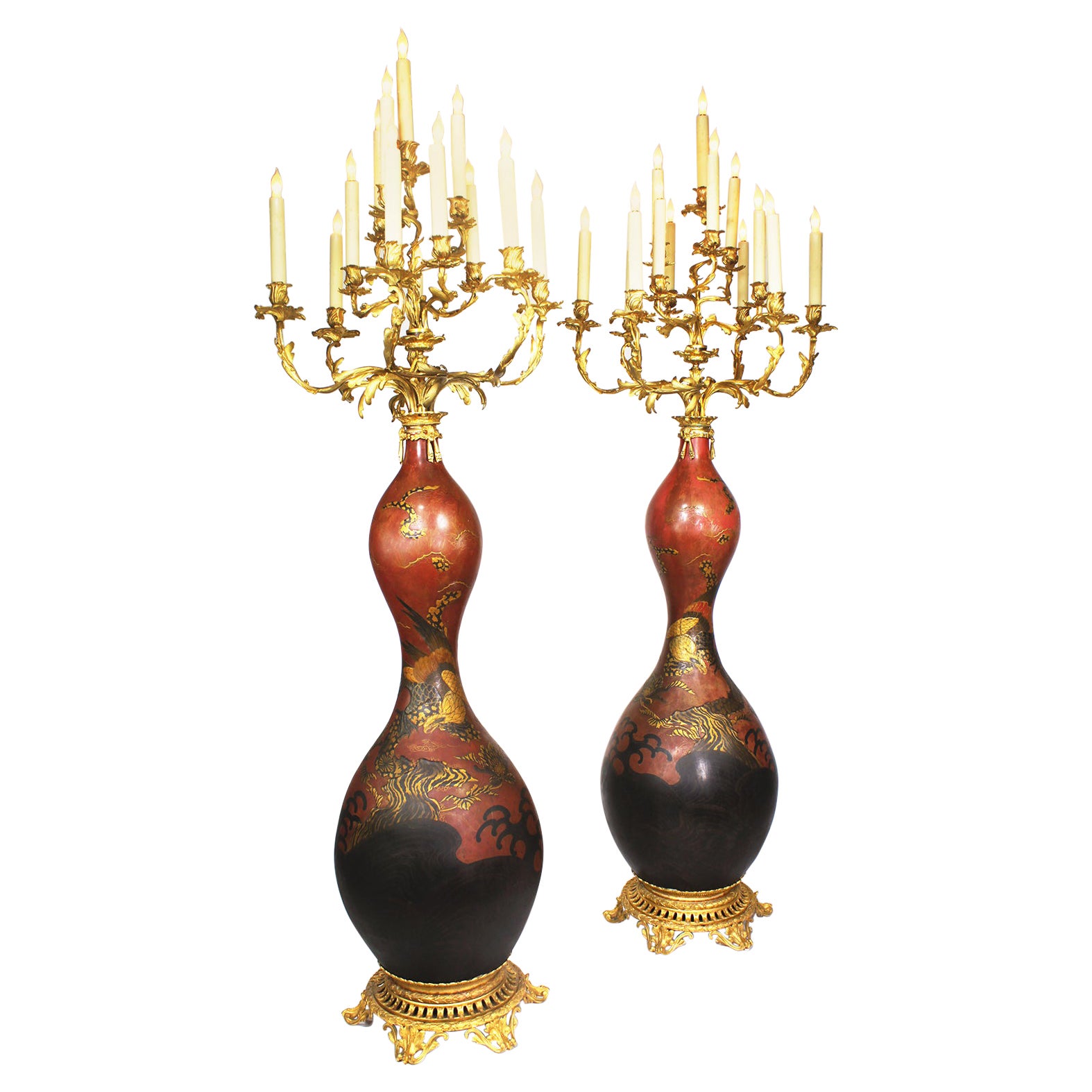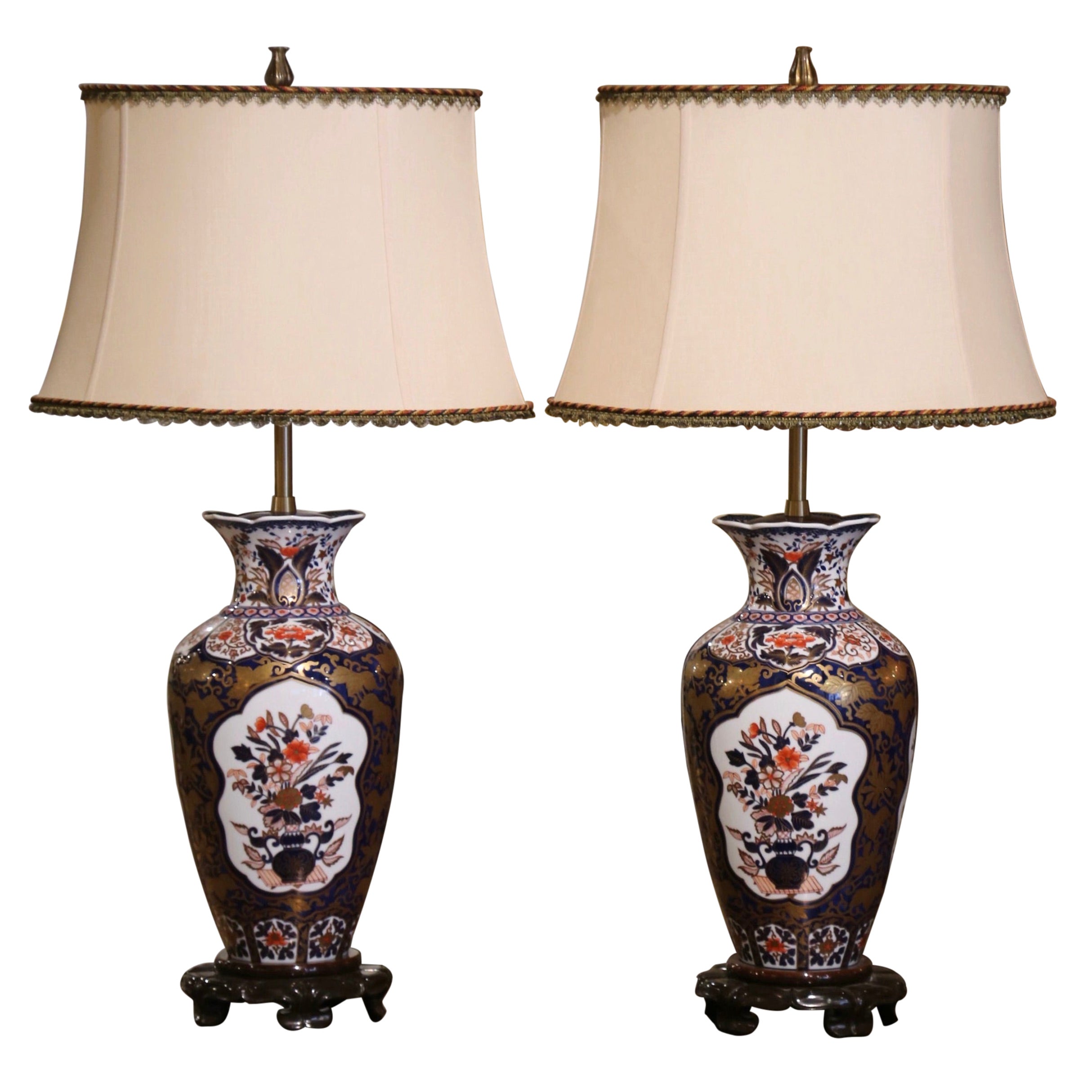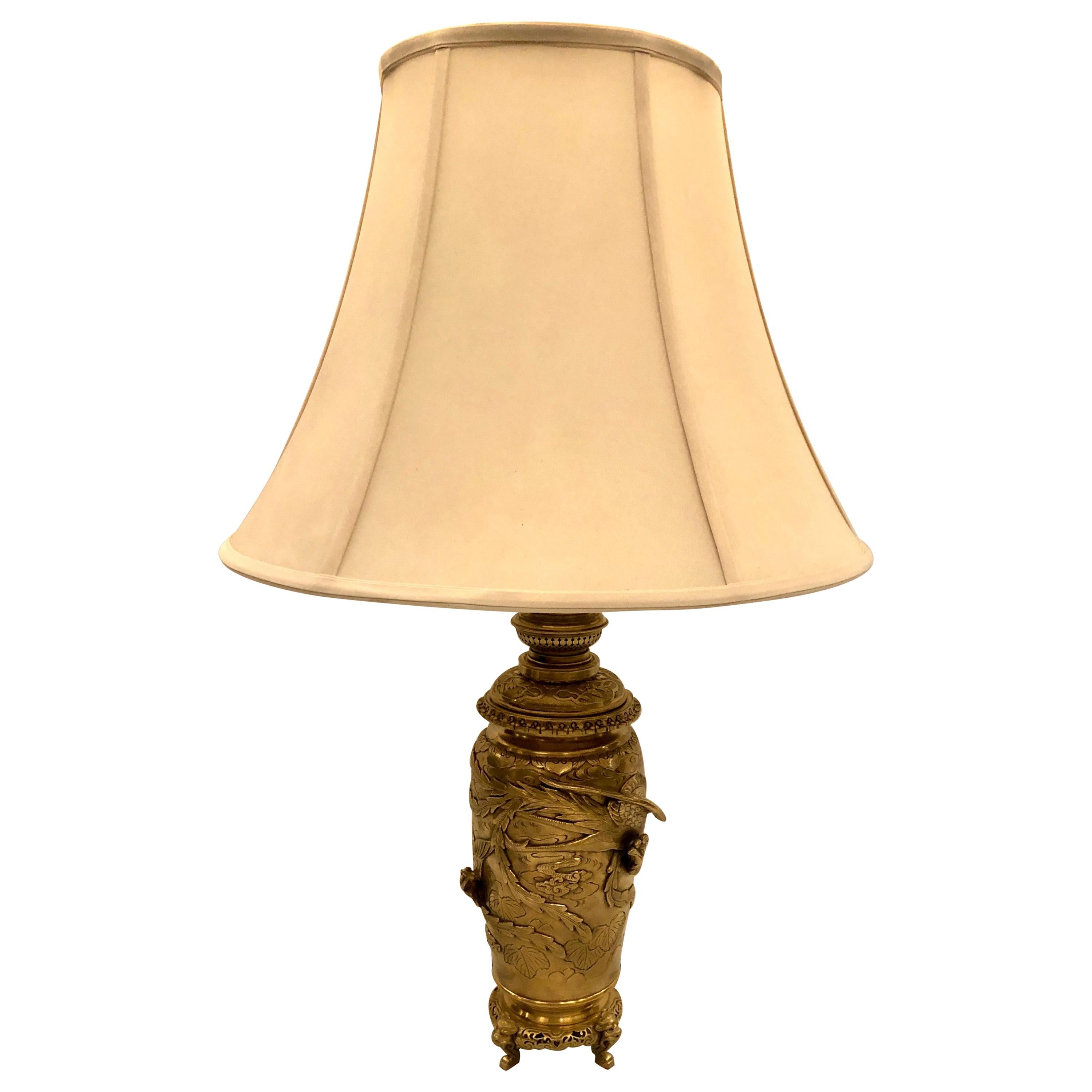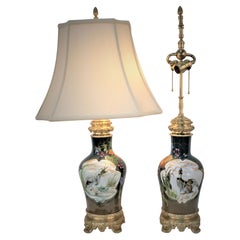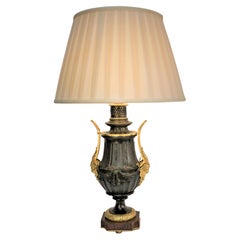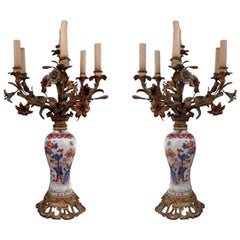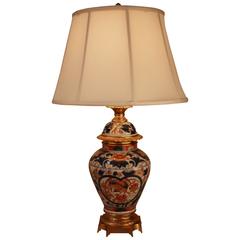
19th Century Imari Porcelain and Gilt Bronze-Mounted Electrified Oil Lamp
View Similar Items
Want more images or videos?
Request additional images or videos from the seller
1 of 11
19th Century Imari Porcelain and Gilt Bronze-Mounted Electrified Oil Lamp
About the Item
- Creator:Imari Porcelain (Manufacturer)
- Dimensions:Height: 30 in (76.2 cm)Diameter: 17 in (43.18 cm)
- Materials and Techniques:
- Place of Origin:
- Period:
- Date of Manufacture:1880s
- Condition:New wiring and new silk lampshade.
- Seller Location:Fairfax, VA
- Reference Number:1stDibs: LU91364197923
About the Seller
5.0
Vetted Seller
These experienced sellers undergo a comprehensive evaluation by our team of in-house experts.
Established in 1978
1stDibs seller since 2011
855 sales on 1stDibs
Typical response time: 7 hours
More From This SellerView All
- Pair of 19th Century Electrified Porcelain Oil Lamps.Located in Fairfax, VAPair of hand painted porcelain table lamps with bronze base and hardware. These lamps are professionally rewired with double...Category
Antique 19th Century French Table Lamps
MaterialsPorcelain
- 19th Century Oxidized and Dore Bronze Electrified Oil LampLocated in Fairfax, VA19th century dark brown, glit bronze oil lamp that has been professionally electrified and fitted with box pleat silk lampshade. 3way socket, up to 250watts.Category
Antique 19th Century French Empire Table Lamps
MaterialsMarble, Bronze
- 19th Century Electrified Bronze Candlestick LampLocated in Fairfax, VA19th century bronze candlestick that has been electrified as table lamp and fitted with silk lampshade.Category
Antique Late 19th Century Table Lamps
MaterialsBronze
- 19th Century Electrified Bronze Onyx Table LampLocated in Fairfax, VAOnyx and bronze from 19th century oil lamp that has been electrified with 2 pull chain sockets and fitted with black lampshade. Professionally rewired.Category
Antique 19th Century French Table Lamps
MaterialsOnyx, Bronze
On Hold$1,250 - 19th Century Gilt Bronze Empire Bouillotte LampLocated in Fairfax, VAGilt bronze double swan arms bouillotte desk/table lamp with ovel red shade.Category
Antique 19th Century French Empire Table Lamps
MaterialsBronze, Iron
- French 19th Century Gilt and Oxidized Bronze Candlestick LampLocated in Fairfax, VA19th century gilt bronze, young girl holding flower candle holder that has been professionally rewired and fitted with small silk lampshade.Category
Antique 19th Century French Table Lamps
MaterialsBronze
You May Also Like
- 19th Century Pair of Imari Porcelaine Lamp Mounted Gilt BronzeBy Imari PorcelainLocated in Marseille, FR19th century pair of porcelain lamp from Imari. Frame gilt bronze decorations of metal polychrome flowers.Category
Antique 19th Century Chinese Chinese Export Ceramics
MaterialsPorcelain
- Pair of Imari Lamps Mounted in 19th Century BronzeLocated in Marseille, FRPair of Arita porcelain lamp called Imari on gilt bronze frame decorated with flowers in polychrome sheet metal from the 19th century. Imari porcelain is a style of Japanese ceramics...Category
Antique 19th Century Japanese Table Lamps
MaterialsPorcelain
- Fine 19th Century French Sevre's Porcelain and Gilt Bronze Mounted Large LampLocated in Dallas, TXA fine and large 19th century French Sevre's porcelain and gilt bronze mounted lamp.Category
Antique Late 19th Century French Belle Époque Table Lamps
MaterialsPorcelain
- Beautiful Late 19th Century Gilt Bronze-Mounted Sèvres Style Porcelain LampBy Manufacture Nationale de SèvresLocated in New York, NYA beautiful late 19th century gilt bronze-mounted sèvres style porcelain lamp. Raised gilt decorations, the front scene is of a reclining maiden among flowers being attended by c...Category
Antique Late 19th Century French Belle Époque Vases
MaterialsBronze
- Pair 19th Century Japanese Imari Porcelain & Gilt-Bronze Torchere CandelabraBy Imari PorcelainLocated in Los Angeles, CAA fine Pair of 19th century Japanese Imari Porcelain and French Gilt-Bronze Mounted Thirteen-Light Celadon Torchere Candelabra. The bottle-shaped Japonisme vases with a Royal red background, decorated with parcel-gilt and black soaring eagles in the hunt within a forestall scene. Each Vase fitted and surmounted with a French 19th century Louis XV Style 13-Light scrolled candelabrum and all raised on a circular pierced gilt-bronze plinth. circa: 1880. Imari Porcelain (????) is the name for Japanese porcelain wares made in the town of Arita, in the former Hizen Province, northwestern Kyushu. They were exported to Europe extensively from the port of Imari, Saga, between the second half of the 17th century and the first half of the 18th century. The Japanese as well as Europeans called them Imari. In Japanese, these porcelains are also known as Arita-yaki (???). Imari or Arita porcelain has been continously produced up through the present day. Characteristics Though there are many types of Imari, Westerners' conception of Imari in the popular sense is associated only with a type of Imari produced and exported in large quantity in mid-17th century. This type is called Kinrande. Kinrande Imari is colored porcelain with cobalt blue underglaze and red and gold overglaze. The color combination was not seen in China at that time. Traditional Ming dynasty color porcelain used dominantly red and green, probably due to scarcity of gold in China, whereas gold was abundant in Japan in those days. The subject matter of Imari is diverse, ranging from foliage and flowers to people, scenery and abstractions. Some Imari design structures such as kraak style were adopted from China, but most designs were uniquely Japanese owing to the rich Japanese tradition of paintings and costume design. The porcelain has a gritty texture on the bases, where it is not covered by glaze. There is also blue and white Imari. Kakiemon style Imari is another type of Imari, but it tends to be categorized separately in Europe. History "Imari" was simply the trans-shipment port for Arita wares. It was the kilns at Arita which formed the heart of the Japanese porcelain industry. Arita's kilns were set up in the 17th century, when kaolin was discovered in 1616 by the immigrant Korean potter, Yi Sam-pyeong (1579–1655). (He may also be known by the name, "Kanage Sambei".) Yi Sam-Pyeong, along with his extended family of 180 persons, left Korea on the offer of a privileged position in Japan. This decision was made after the occurrence of certain Japanese invasions of Korea. After Yi Sam-Pyeong's discovery, his kilns began to produce revised Korean-style blue and white porcelains, known as "Shoki-Imari". In the mid-17th century there were also a lot of Chinese refugees in Northern Kyushu due to the turmoil on Chinese continent, and it is said one of them brought coloring technique to Arita. Thus Shoki-Imari developed into Ko-KutaniImari. Ko-Kutani was produced around 1650 for both export and domestic market. Blue and white porcelain continued to be produced and they are called Ai-Kutani. Ko-Kutani Imari for the export market usually adopted Chinese design structure such as kraak style, whereas Ai-Kutani for the domestic market were highly unique in design and are accordingly valued very much among collectors. Ko-Kutani style evolved into Kakiemon style Imari, which was produced for about 50 years around 1700. Imari achieved its technical and aesthetic peak in Kakiemon style, and it dominated European market. Blue and white Kakiemon is called Ai-Kakiemon. Kakiemon style transformed into Kinrande in the 18th century. Kinrande used blue underglaze and red and gold overglaze, and later some other colors. Imari began to be exported to Europe because the Chinese kilns at Ching-te-Chen were damaged in the political chaos and the new Qing dynasty government stopped trade in 1656–1684. Exports to Europe were made through the Dutch East India Company, but the designation "Imari Porcelain" in Europe connotes Arita wares of mostly Kinrande Imari. Export of Imari to Europe stopped in mid-18th century when China began export to Europe again, since Imari was not able to compete against China due to high labor cost. By that time, however, both Imari and Kakiemon style were already so popular among Europeans, Chinese export porcelain copied both Imari and Kakiemon style, which is called Chinese Imari. At the same time, European kilns, such as Meisen also tried to copy Imari and Kakiemon. Export of Imari surged again in late 19th century (Meiji era) when Japonism flourished in Europe. Thus in western world today, two kinds of Imari can...Category
Antique 19th Century Japanese Japonisme Floor Lamps
MaterialsOrmolu, Bronze
$19,850 Sale Price / set59% Off - Pair of Early 20th Century Imari Porcelain Vases Mounted as Table LampsBy Imari PorcelainLocated in Dallas, TXAdd the perfect amount of color into your home with this important pair of antique lamps. Created in Japan circa 1934, and round in shape each porcelain lamp rests on a wood base, an...Category
Early 20th Century Japanese Table Lamps
MaterialsPorcelain
Recently Viewed
View AllMore Ways To Browse
Imari Table Lamp
Imari Mount
Mounted Imari
Antique Imari Lamps
Imari Lamp Antique
19th Century Blue Gold Porcelain Tables
Japanese Imari Lamp
Imari Vase Lamps
Japanese Imari Table Lamp
Japanese Oil Lamp
Imari Bronze
Japanese White Porcelain Lamp
Japanese Bronze Vase Lamp
Antique Blue Oil Lamp
Japanese Red Vase Lamps
Antique Japanese Oil Lamp
Imari Gold Lamp
Imari Gilt Mounted Vase
